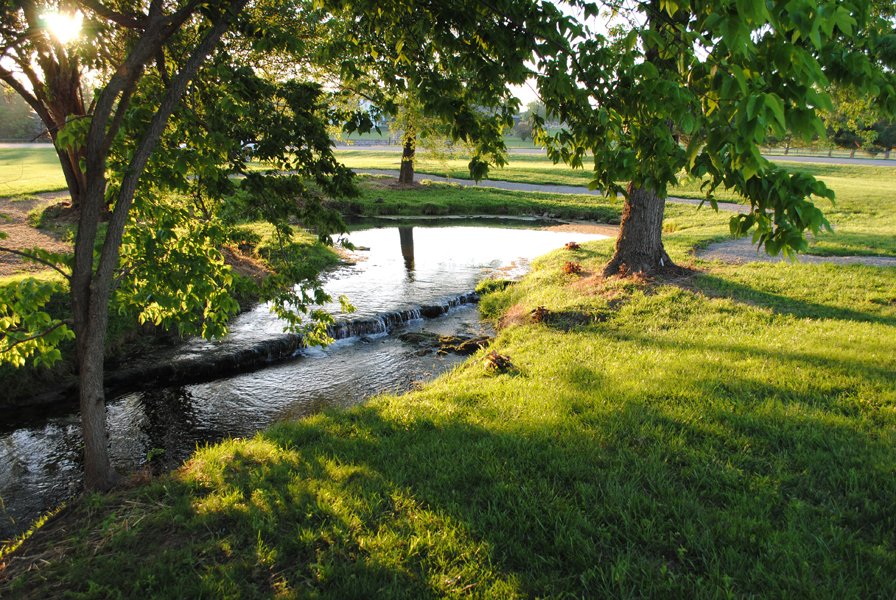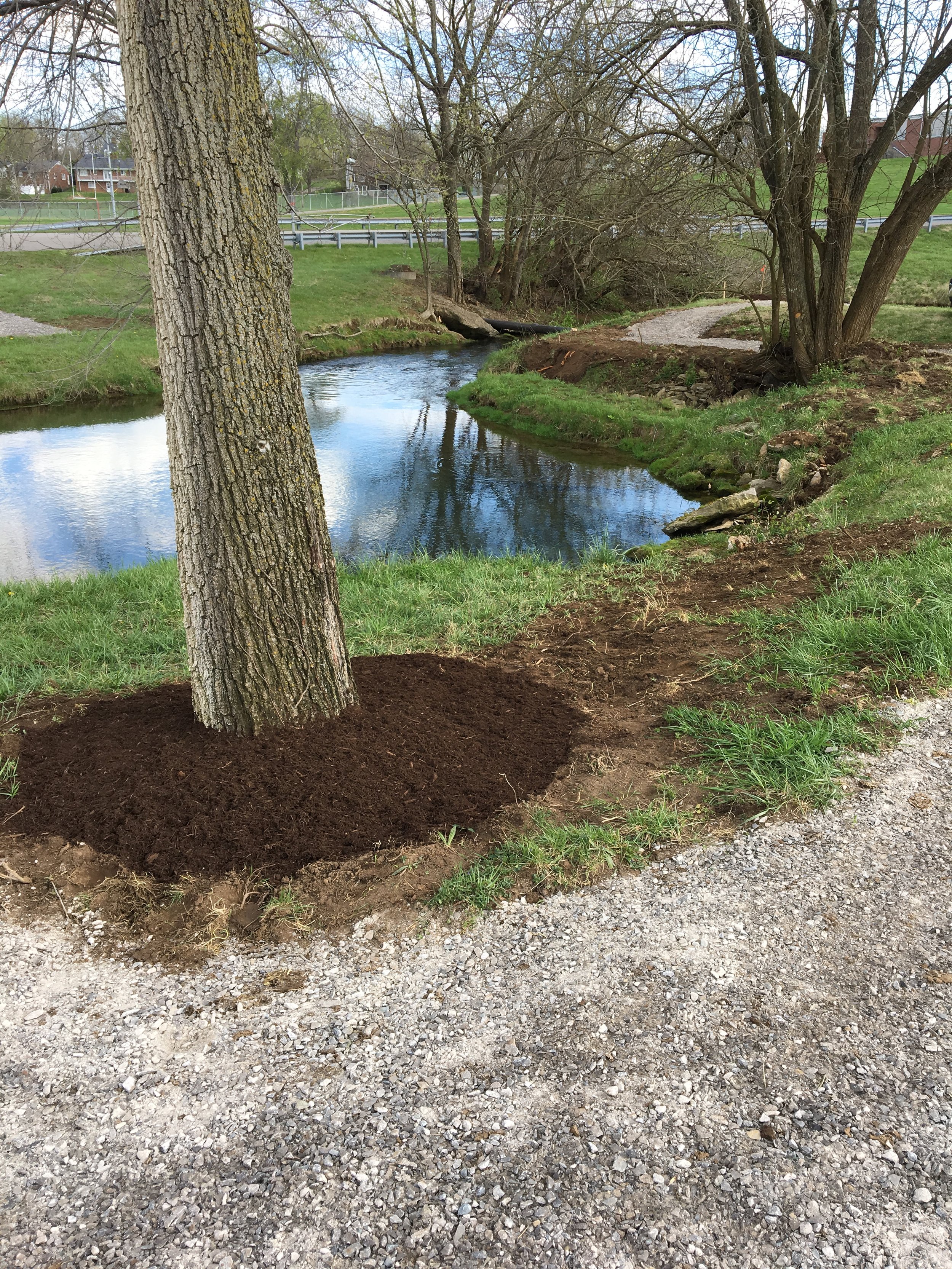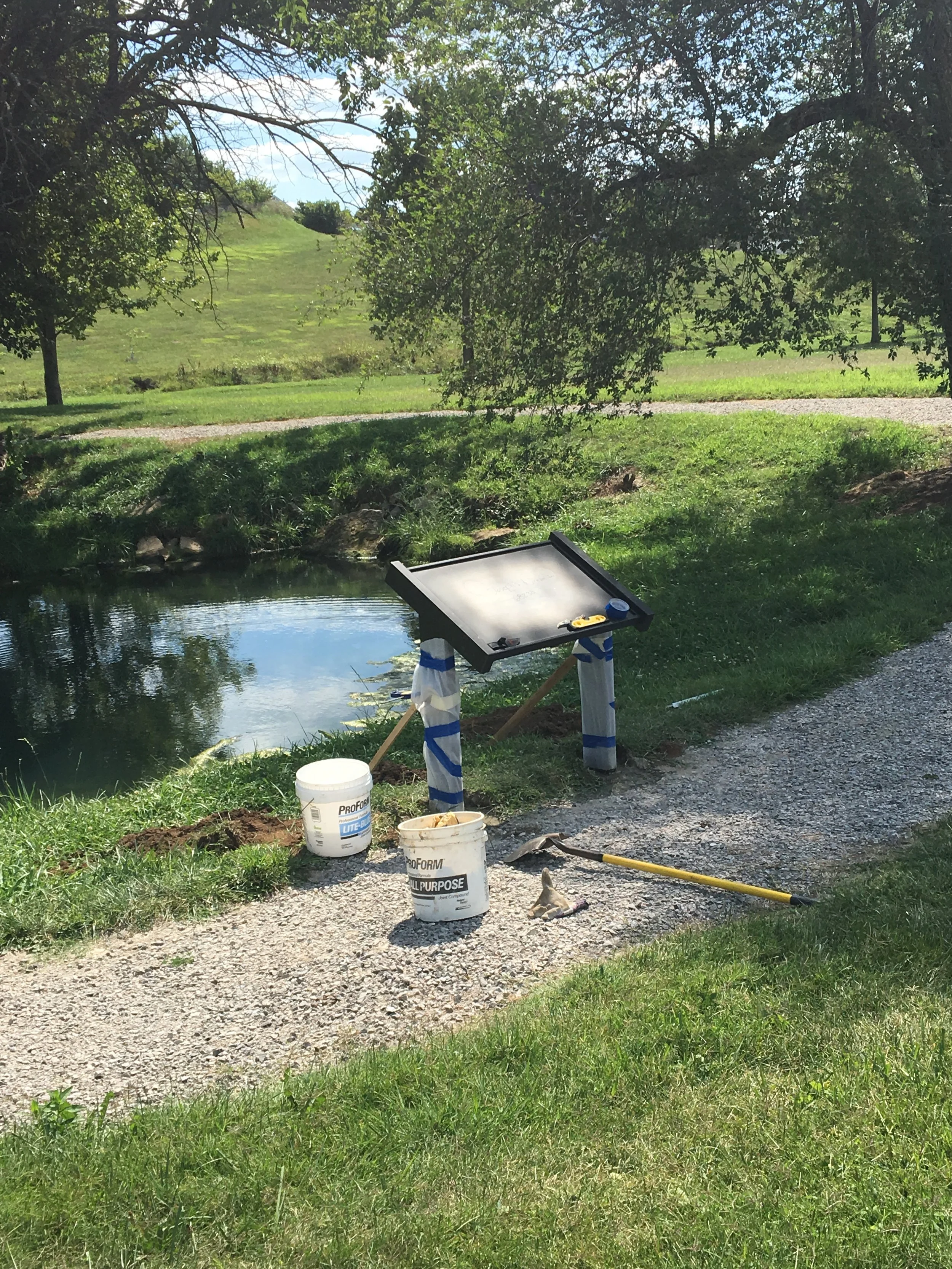Big Spring History
The site of the First Permanent Settlement West of the Alleghenies, which became present-day Harrodsburg, is firmly connected to this spring. This site was chosen because of the never-ending flow of fresh, clean water—and for the creek that it supplies. Situated in the middle of the territory, the spring is surrounded by open, fertile, tillable land that offered numerous benefits.
During a surveying trip, James Harrod led a group of men from their landing point on the Kentucky River to this very site, which he determined to be the best location for the new settlement. Under a sprawling Elm tree that stood about 100 yards downstream, the men laid down their packs, made a fire, relaxed, and enjoyed their first meal on the site of the township they would develop. Soon it became their evening routine to gather under the Elm adjacent to the spring, having spent the day exploring, scouting and surveying the new land. Importantly, though John Lythe of the Church of England has been noted as the first preacher in Kentucky (April 1775), it was under that same Elm tree that Rev. Thomas Tinsley and Rev. William Hickman preached the first Baptist sermon in Kentucky on May 1775.
During those early years, the people of “Harrod’s Town” used this spring and the Town Branch creek for fresh drinking water, cooking, laundry, and bathing, as well as for the watering of gardens and livestock. It became the life blood of the growing settlement.


Sign located at the Park

Big Spring, path, and sign.

Signature of James Harrod, the man who discovered Big Sping.

Old sewer pipes being removed from the spring by volunteers.


Volunteers mulching trees around the Park.

Project marking start of the restoration of the spring.

Harrodsburg Herald article announcing the opening of Big Spring Park.

Authorization to Perform Work - Pg1

Authorization to Perform Work - Pg2

Letter to City of Harrodsburg

Local pastor baptizing in the Big Spring.

Sign being installed

Park bench installed


In memory of John Carter, local historian and videographer, friend of Big Spring.

Prayer partners from A Sacred Trust that started this project through prayer and hard work.

James Harrod's journal.

Harrod's Town map, 1774.

